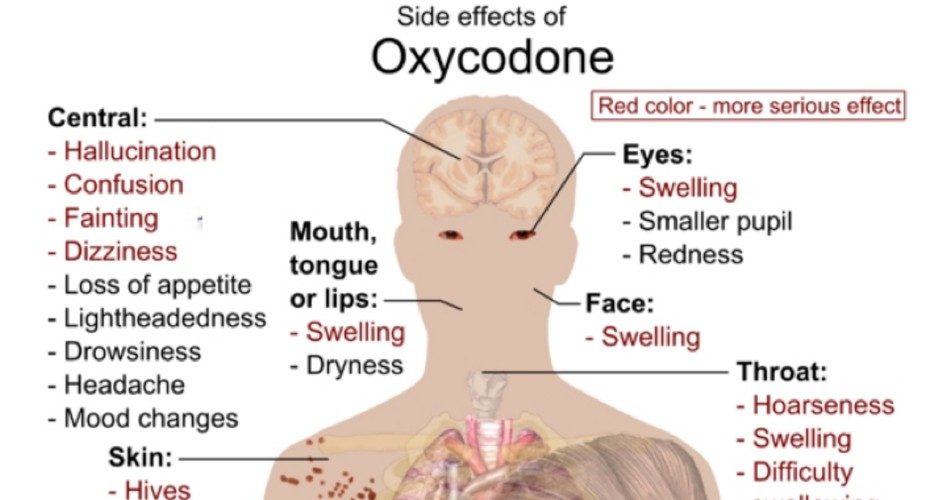
Anti-anxiety and pain medicines may be linked to an increased risk of committing murder, according to a new study by researchers in Finland. Results published in the June 2015 journal World Psychiatry reveal a strong correlation between a person’s risk of homicide and use of either stress-reducing benzodiazepines or analgesics — i.e., medications used to treat pain.
Though the research proves no causative effect, the findings link anti-inflammatory pain relievers to an alarming increase of more than 200 percent in the risk of committing homicide. Opioid pain relievers tie to a 92-percent increase, whereas benzodiazepines were associated with a 45-percent elevated risk. Researchers also studied anti-depressant use and concluded an increased risk of 31 percent, which they described as “only modestly increased” with “borderline statistical significance.” However, they caution, “Benzodiazepine and analgesic use was linked with a higher risk of homicidal offending, and the findings remained highly significant even after correction for multiple comparisons.” (The mention of “multiple comparisons” refers to allowances for confounding factors such as simultaneous use of alcohol or illicit drugs.)
How does the Finnish team explain these results? “I think that these chemical substances affect the impulse control of the person,” explains lead author Dr. Jari Tiihonen to Medical Daily. “The only surprising result was that painkillers also increase the risk.”
The common thread among the drugs under investigation is their pronounced effect on the central nervous system and specifically on chemicals called neurotransmitters that allow cells to communicate properly. Neurotransmitters regulate both physical and emotional processes such as mood, appetite, the sleep-wake cycle, memory, and impulse control. Dr. Peter Gotzsche, medical researcher at the Nordic Cochrane Center, explains that tampering with neurotransmitters creates a chemical imbalance that can result in a person’s erratic, uncharacteristic behavior.
For example, the benzodiazepines — which Finnish researchers link with a 45-percent increased risk of homicide — are tranquilizers intended to decrease anxiety. They stimulate naturally occurring neurotransmitters called GABA, or gamma-aminobutyric acid. In normal amounts, GABA calms a person by inhibiting transmission of nervous impulses. According to DNC News, GABA is one of the most abundant neurotransmitters in the central nervous system, “especially in the cerebral cortex, which is where thinking occurs and sensations are interpreted.” Benzodiazepines put GABA in overdrive. Popular examples include Xanax (alprazolam), Valium (diazepam), Ativan (lorazepam), and Halcion (triazolam).
Pain killers, on the other hand, mimic neurotransmitters and block pain signals being sent to the brain. The National Institutes of Health explains that opioids also stimulate the activity of dopamine, a neurotransmitter that regulates movement, emotion, cognition, and motivation. Research links over-stimulation of dopamine to destructive behaviors such as suicide and aggression. Because of their high potential for abuse and addiction, the federal government designates opioids as controlled narcotics under the Controlled Substances Act. Common opioids include Dilaudid (hydromorphone), Percocet (oxycodone), morphine, codeine, and hydrocodone.
Considering their effect on the central nervous system, it is perhaps surprising that the researchers in Finland expressed surprise at the link between homicide and analgesic use. Mosby’s Nursing Drug Reference lists a variety of adverse effects that anti-anxiety and pain medications can inflict: mood changes, confusion, delirium, hallucinations, stimulation, memory impairment, anxiety, irritability, and even complex sleep related actions such as sleep driving and sleep eating. However, the U.S. Food and Drug Administration (FDA) reserves its strictest warnings for anti-depressants, which the Finnish team linked to “only modestly increased” risk of committing homicide.
Since 2004, the FDA has required anti-depressant manufacturers to label their products with a black box warning — the strongest measure short of pulling a drug from the market — alerting patients to, among other dangers, a high risk of suicidal and homicidal thinking or behavior clinically linked to use of the drugs. The warnings apply to both children and adults. Other known side effects include agitation, aggressive behavior, panic attacks, acting without thinking, severe restlessness, and mania.
Chart of oxycodone’s side effects: Medical gallery of Mikael Häggström 2014




